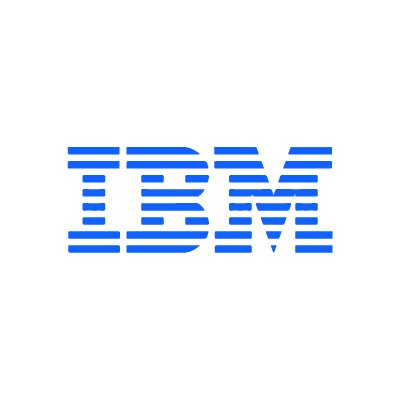
IBM Behavioural Interview Template for AI Engineer (Software & Consulting focus)
Purpose: Assess how an AI Engineer operates within IBM’s client-centric, enterprise-scale environment, aligning with IBM values (Dedication to every client’s success; Innovation that matters; Trust and personal responsibility) and ways of working (Enterprise Design Thinking: Hills, Playbacks, Sponsor Users) across hybrid-cloud and AI initiatives (e.g., watsonx, Red Hat OpenShift). Format (60 minutes): - 5 min: Introductions and role context (hybrid cloud + AI delivery cadence, cross-BU collaboration with Software/Consulting/Infrastructure). - 35 min: Behavioural deep dives (2–3 STAR stories with probing). - 10 min: Scenario case (client-focused, AI governance or delivery trade-off). - 5 min: Candidate questions and close. Focus areas specific to IBM: 1) Client impact in regulated, mission-critical settings: How you translate ambiguous business goals into measurable AI outcomes; partnering with sponsor users; handling production constraints and SLAs. 2) Collaboration in a global, matrixed org: Working with consultants, product managers, designers, researchers, and platform teams (e.g., OpenShift, Data/AI platform teams) across time zones; clear handoffs and documentation. 3) Enterprise Design Thinking: Use of Hills, Playbacks, and sponsor-user feedback to shape AI solutions; how you iterate and validate value. 4) Trustworthy/Responsible AI: Bias detection/mitigation, transparency, data privacy, model risk management, governance workflows (e.g., approvals, lineage, monitoring, rollback plans). 5) Delivery at scale (MLOps): Reproducibility, CI/CD for models, monitoring drift, cost/performance trade-offs, interoperability across hybrid/on-prem environments. 6) Ownership and integrity: Taking responsibility for outcomes, learning from setbacks, and elevating team performance. Sample questions (behavioural, IBM-tailored): - Client Success: Tell me about a time you delivered an AI solution for a mission-critical workload. How did you define the Hill (outcome) and validate it with sponsor users? What business metric moved? - Responsible AI: Describe a situation where model fairness or regulatory requirements conflicted with speed-to-market. How did you decide, and how did you communicate risk to the client and internal stakeholders? - Enterprise Delivery: Walk me through a time you productionized a model on hybrid cloud or OpenShift. What went wrong in rollout, and how did you ensure reliability and observability? - Collaboration: Give an example of working across Consulting and Software teams. How did you align priorities, manage handoffs, and resolve conflict? - Innovation that Matters: Share a time you introduced a novel AI approach (e.g., retrieval, fine-tuning, optimization) that materially improved client outcomes under strict cost or latency constraints. - Trust and Personal Responsibility: Describe a mistake you made on an AI project. How did you surface it, remediate impact, and prevent recurrence? Scenario case (10 minutes): - Prompt: A financial-services client wants a generative AI assistant for analysts, but legal requires strict data residency and audit trails, and the CISO is concerned about prompt injection. You have a 12-week timeline tied to a high-visibility release. What trade-offs do you make, how do you structure Hills, and how do you de-risk delivery (governance, evaluation harness, red-teaming, monitoring, rollback)? - What the interviewer probes: Stakeholder alignment (CIO/CISO/Legal), governance controls (PII handling, evaluation criteria, approval workflows), platform choices (on-prem, VPC, OpenShift), and incremental value delivery (playbacks, KPIs). Evaluation rubric (aligned to IBM practice): - STAR depth and clarity (problem framing, constraints, measurable outcomes). - Client value and consultative mindset (defines Hills, runs Playbacks, ties work to business metrics). - Responsible AI and governance (bias/privacy/safety, auditability, incident response). - MLOps craftsmanship at enterprise scale (versioning, CI/CD, monitoring, SLOs, cost/perf trade-offs in hybrid cloud). - Collaboration in a matrixed, global context (clear communication, documentation, respectful conflict resolution). - Ownership and learning (accountability, continuous improvement, coaching peers). Red flags (IBM-specific): - Light on client impact or cannot articulate measurable outcomes. - Ignores governance, security, or regulatory constraints. - Lacks experience collaborating across time zones or with non-engineering stakeholders. - Over-indexes on model novelty over reliability, cost, and maintainability. Candidate guidance (what good looks like): - Prepare 3–4 STAR stories mapped to IBM values and the focus areas above. - Quantify impact (latency, accuracy, cost, revenue/savings, risk reduction) and reference Playbacks/Sponsor Users. - Highlight examples using hybrid-cloud patterns, watsonx or analogous governance/observability workflows. - Show how you earn trust: transparent trade-offs, documentation, and post-incident learning.
60 minutes
Practice with our AI-powered interview system to improve your skills.
About This Interview
Interview Type
BEHAVIOURAL
Difficulty Level
3/5
Interview Tips
• Research the company thoroughly
• Practice common questions
• Prepare your STAR method responses
• Dress appropriately for the role